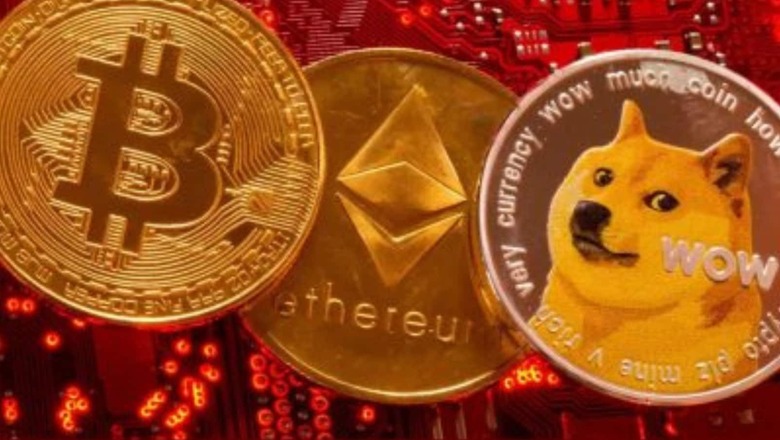
views
Many with a narrow vision are interpreting that the bubble of crypto is now bursting with a fall in its value, missing out on what is happening across the globe. The accelerated pace to bring in regulation for the virtual digital asset (VDA) due to Russia and Ukraine war brings to focus the vital role these transactions have played and are going to play in the coming years, whether in war or peace.
The Russia-Ukraine war zone witnessed effective use of virtual digital assets to either ensure effective sanctions and cripple the economy of Russia or provide assistance to Ukraine in the fastest mode. VDAs have taken centre-stage and nations across the globe have accelerated regulations to bring in clarity and legalise the operations of crypto as an asset class, with peer-to-peer lending.
ALSO READ | For US and European Union, the Sanctions on Russian Oligarchs May Backfire
Regulations for Crypto: Global Examples
The United States, Dubai, EU and Singapore have come up with policies focusing on key areas of consumer and investor protection, financial inclusion, encouraging responsible innovation, addressing the concerns of financial stability, and combating illicit financial activity. Further, to ensure clarity, specific agencies have been identified for a designated policy frame to monitor and ensure enforcement and also provide an opportunity to build on the blockchain and crypto product technologies.
The US is focusing to continue to be competitive in this space. Dubai is targeting to become a hub for Web 3.0 by having facilitating policies for digital assets. “Dubai will provide the most advanced virtual asset ecosystem in terms of organisation, governance and security,” said Sheikh Mohammed bin Rashid Al Maktoum, prime minister of UAE, as Dubai approved a virtual asset regulation law in March this year. The Dubai Virtual Assets Regulatory Authority (VARA), an affiliate of the Dubai World Trade Centre, will oversee and monitor regulations and disclosures.
Activities subject to VARA are:
* Operating and managing virtual assets platforms services;
* Exchange services between virtual assets and currencies, whether national or foreign;
* Exchange services between one or more forms of virtual assets;
* Virtual asset transfer services;
* Virtual asset custody and management services;
* Services related to the virtual asset portfolio;
* Services related to the offering and trading of virtual tokens.
In January 2020, Singapore’s Payment Services Act came into effect as a response to the Financial Action Task Force’s 2018 update to its Anti-money Laundering (AML) and Combating the Financing of Terrorism (CFT) cross-border risk guidelines for cryptocurrency. The Payment Services Act is a flexible framework for the regulation of payment systems and payment service providers in Singapore that establishes registration requirements along with AML and CFT guidelines for crypto businesses.
The EU’s new rules were executed to boost benefits and curb threats by coming up with a legal framework safeguarding consumers against market manipulations and the possibility of financial crimes. Environmental concerns are also inbuilt to ensure transition by 2025, by moving away from crypto mining to reduce carbon footprint. The focus is to boost users’ confidence and support the development of digital services and alternative payment instruments. Besides, the EU is geared toward this framework paving way for innovation-friendly crypto regulation.
The regulation being created is pioneering in terms of innovation, consumer protection, legal certainty and the establishment of reliable supervisory structures in the field of crypto-assets.
OECD (Organisation for Economic Cooperation and Development) has also flagged the need to set procedures and protection for crypto-asset users and recommends a regime of self-certification to supplement the AML (Anti Money Laundering) and KYC (Know your Customer) mandatory procedures while on-boarding.
Do Not Miss the Web 3.0 Bus
The world is realigning its fiscal policies to cater to the fast spread of virtual digital assets (VDAs) and their possible penetration and use cases. On the other hand, India is still focusing on amendments to only the tax laws whether direct or indirect by not clearly defining the virtual digital asset class. India’s tax-oriented approach has a very narrow view to just maximise revenue by high tax slabs to deter low-income investors. Attempt to bring in cogent policy for crypto regulation and its operation is still wanting.
The non-clarity in classifying virtual digital assets is bringing in anomalies. The existing definition of VDAs also includes assets that are transferred for no monetary consideration. That is the genesis of not permitting the offsetting of loss in other held VDAs as in security investments. If it is an asset then taxing the entire transaction and not enabling the offset will not be in line with the law of land and the same applies to the indirect tax of GST. They are not permitted to set off on income earned from VDAs other than the cost of acquisition. Moreover, losses incurred on VDA transfers cannot be used to diminish tax liability under other income slabs. An assessee will also not be allowed to carry forward such losses to succeeding assessment years.
Putting the earnings from virtual digital assets under a higher slab of 30 per cent with 1 per cent TDS on transfer without defining crypto needs clarity. The Finance Bill 2022 introduces Section 194S into the Income Tax Act, 1956, under which a person holding virtual digital asset must deduct income tax at the rate of 1 per cent from the transaction amount. The TDS is also applicable to transfers of VDAs where there is no cash component. The implementation of Section 194S will be riddled with complexity, particularly in scenarios where no fiat currency is used for transactions.
The two issues that are clear with respect to India are: VDA will not be legal tender in India, and Digital Currency (CBDT) will be issued by the central bank, that is the Reserve Bank of India. The Advertisement Standards Council of India (ASCI) has made it clear to put a disclaimer so that the investor takes informed decisions on the speculative nature of assets.
The moot question is will this delay make India miss out on the opportunity of being a hub for Web 3.0. As discussed, Dubai is laying the red carpet, appreciating that database transactions are a function that blockchain is uniquely suited for. The decentralised, consensus-driven, trustless nature of blockchain makes it naturally resilient to attack. Blockchain has emerged as a platform for a variety of use cases beyond just crypto — like smart contracts, non-fungible tokens (NFTs), decentralised financing and distributed software, to name a few. The need of the hour is to come out of the dilemma which is resulting in a delay in having a holistic approach to regulation and to ensure we do not miss the bus as it had happened during Web 2.0. India must take the lead in Web 3.0.
Aruna Sharma is a development economist and former secretary to the Government of India. The views expressed in this article are those of the author and do not represent the stand of this publication.
Read all the Latest Opinion News and Breaking News here


















Comments
0 comment